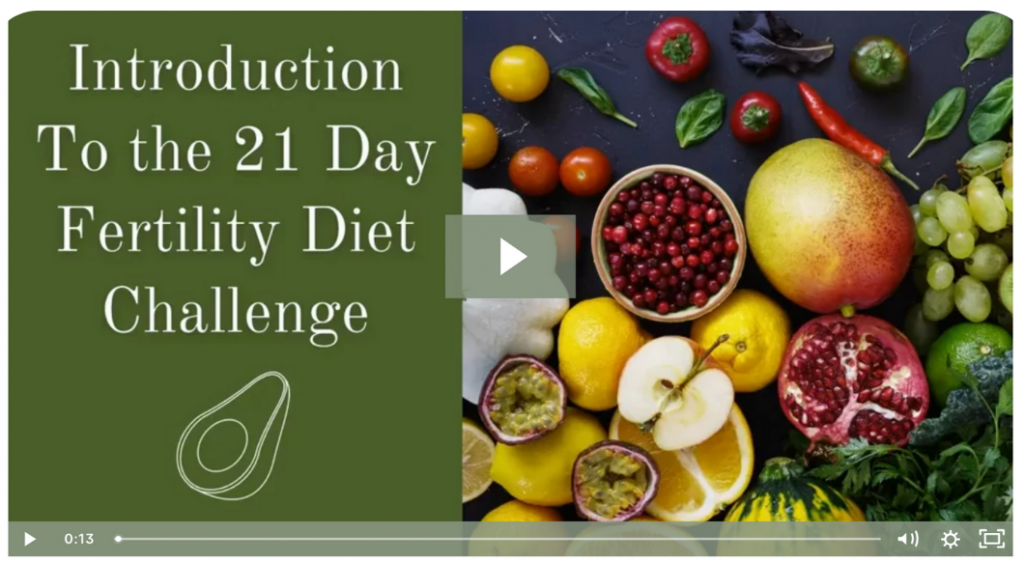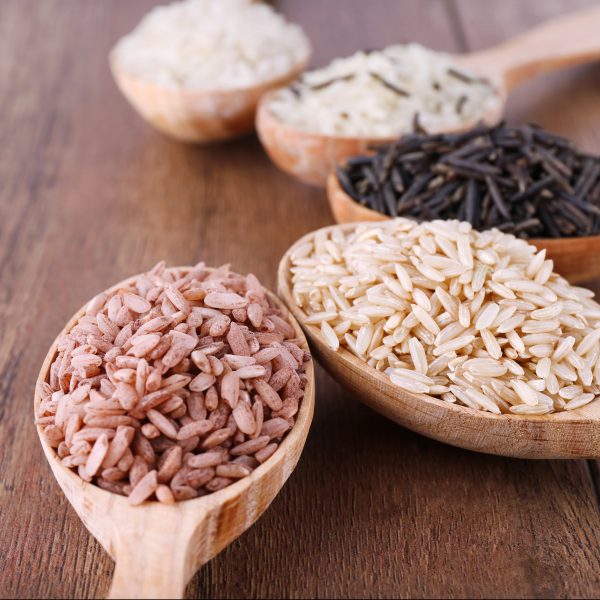When I say whole grains, what comes to mind? Wheat, maybe oats. Well do you know about Quinoa, Millet, Buckwheat, Spelt, Brown Rice, and Barley? If you said yes, I have one more question for you, have you ever cooked with these grains? If you said no, do not worry today is a new day and I hope to introduce you to some of your new favorite foods. Whole grains go great with just about anything!
Whole grains, I mean truly whole grains (ones that are still intact in their original form) provide fiber, vitamins and minerals to your diet. Below I go into detail about each of these little powerhouses and various ways to eat them. In general, whole grains are an essential part of a fertility diet because they contain:
- B vitamins – essential for healthy fertility and pregnancy. Some of the more well-known are B12 and folic acid (B9).
- Fiber – fiber helps the body to get rid of excess estrogen, helps to keep the colon clean, and take more time to digest so there isn’t a quick rise in blood sugar.
- Antioxidants – antioxidants protect the cell’s DNA, helping to preserve ovum (egg) health as well as repair and protect tissues from free radical damage.
- Studies have linked eating whole grains to reducing insulin resistance and obesity, both imbalances that impact fertility.
A study from the American Journal of Clinical Nutrition found that those consuming the most dietary fiber from whole grains were 49% less likely to gain weight compared to those eating foods made from refined grains.
Quinoa
Probably my favorite of all, quinoa is a nutty tasting, gluten-free, protein rich seed that is high in manganese, magnesium, iron, tryptophan, copper, phosphorus, and fiber. Quinoa is a complete protein (meaning all essential amino acids are present).
Fun fact about quinoa: It is thought to help people who suffer from migraines. Quinoa is high in magnesium, which helps to relax blood vessels in the body. It is also high in riboflavin (B2) which has been shown to reduce the frequency of migraines.
My favorite ways of eating quinoa:
- sprout and put on salads & sandwiches
- cook and put into smoothies
- make pancakes
- cook and eat with some olive oil, salt, and pepper as a side dish
- make a breakfast cereal with it adding fresh fruit
- use it in place of pasta
- use it in soups
Millet
This tiny grain-like seed tastes nutty and creamy and can be used in many different dishes. Millet is good source of several minerals, such as phosphorus, manganese, and magnesium.
Some meal suggestions for millet:
- eat as a breakfast porridge (my favorite way of eating it)
- use as a side dish in the same way you would use a potato
- mix with sautéed vegetables for a quick healthy meal
Barley
Barley is a nutty, chewy grain that looks a lot like wheat berries. Packed with fiber, selenium, copper, and manganese, barley provides more than 50% of the daily recommended amounts of fiber.
Fun fact about barley: Did you know that deficiencies in selenium has been linked to low sperm count, poor motility and poor egg health? Did you know that barley is high in selenium, providing 52% of the daily recommended amount?
Barley meal suggestions:
- eat as a hot breakfast cereal
- create a side dish with cooked or sprouted barley and chopped veggies
- serve hot or cold in place of pasta or potatoes
Buckwheat
Now you have an excuse to make pancakes:) Buckwheat is another one of those seeds being called and used like a grain that can be used in place of rice or potatoes. Buckwheat is gluten free and is rich in manganese and magnesium.
Buckwheat meal suggestions:
- you can make awesome pancakes
- eat as a whole grain warm cereal
- add to soups and stews
Spelt
Miss popularity these days, spelt is an ancient cousin of wheat. Whereas wheat has been hybridized, spelt is still the ancient grain today that it was thousands of years ago. This may be the main reason it does not cause sensitivities in people who are intolerant to wheat. Spelt is a great source of manganese, niacin, copper, phosphorus, protein, and fiber.
Some meal suggestions for spelt:
- spelt flour can be used for bread, pastas, muffins, etc.
- serve cooked spelt berries as a side dish
- add cooked or sprouted spelt berries to your salads
Brown Rice
Did you know that the milling and polishing process that converts brown rice into white rice destroys:
- 67% of the vitamin B3
- 80% of the vitamin B1
- 90% of the vitamin B6
- half of the manganese
- half of the phosphorus
- 60% of the iron
- all of the dietary fiber and essential fatty acids
Brown rice is such a wonderful grain and tastes fantastic. Once you make the switch you will not want to go back to the stripped, white processed, shadow of a rice… white rice.
Rice meal suggestions
Rice is simple it can be used as a breakfast cereal (my childhood favorite is rice and raisins), as a side dish, in fried rice, or used in making rice milk.
Try wild rice as an alternative to just plain brown rice. I love to cook up a pot for the week and store it in the fridge. You can add it to soups, burritos, or as a delicious side dish. Try the recipe below:
2 cups wild rice
2 1/2 cups water
Rinse rice, place in small stock pot, add water, bring to a boil. Cover and lower heat to low. Let simmer for approximately 40 minutes.
Add in some grass-fed organic butter, 1 tsp. dry rubbed sage, 1 tsp. thyme and 2 Tbsp. organic wheat-free Tamari.
Serve hot 🙂
Now you know, what are you going to do about it?
I hope this brought to light some new foods for you to try and incorporate into your fertility diet. Most of these grains are inexpensive and can be found in any grocery store. I get mine really inexpensively at the bulk section of my health food store. For some recipes, head over to our Fertility Diet Recipes Page…
Once you try out a new grain, please let us know how you like it and how it turned out for you!
Watch The Introduction to the 21 Day Fertility Diet Challenge
- Learn how to transition to a natural fertility diet by focusing on the important 5
- Get all the details on how to use nutrition as a tool for hormonal health, cell protection and fertility wellness
- An effective tool to help your tastebuds transition towards healthier foods
- Learn which foods are most important for fertility and how to regularly eat them






